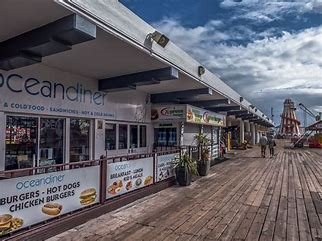The Vulcan, a British strategic bomber aircraft, has etched its name in aviation history with its imposing stature, formidable capabilities, and iconic presence. This aircraft, developed by Avro and produced by Vickers-Armstrongs, served as a cornerstone of the British nuclear deterrent during the Cold War. Let’s delve into the fascinating world of the Vulcan, exploring its design, operational history, and enduring legacy.
A Masterpiece of Engineering
The Vulcan’s design was a testament to British engineering prowess. Its delta-wing configuration, a rarity in bomber aircraft, offered exceptional high-speed performance and a low radar signature. The aircraft was powered by four Rolls-Royce Olympus turbojet engines, providing it with a range of over 4,000 miles. The Vulcan’s spacious bomb bay could accommodate a variety of payloads, including conventional bombs, nuclear weapons, and electronic countermeasures.
A Pillar of the Cold War Deterrent
The Vulcan played a crucial role in the British nuclear deterrent during the Cold War. It was primarily tasked with delivering nuclear weapons to targets within the Soviet Union. The aircraft’s ability to fly at high altitudes and maintain supersonic speeds made it a formidable threat. The Vulcan’s crews were highly trained and skilled, ensuring the aircraft’s readiness for any potential mission.
Operational Highlights and Challenges
The Vulcan’s operational history was marked by several significant events. One of the most notable was its participation in the Falklands War of 1982. Despite being designed for high-altitude operations, the Vulcans were adapted to carry conventional bombs and flew low-level missions to target Argentine forces on the islands. Their success in the conflict demonstrated the versatility and effectiveness of the aircraft.
However, the Vulcan also faced challenges during its service life. The advent of long-range missiles and advanced air defenses posed a growing threat to the aircraft’s survivability. To address these concerns, the Vulcan’s capabilities were continually upgraded. New avionics systems, improved countermeasures, and advanced weapons were introduced to enhance its effectiveness.
Legacy and Enduring Appeal
The Vulcan’s legacy extends far beyond its military service. Its distinctive appearance and impressive capabilities have captured the imagination of aviation enthusiasts worldwide. Today, the Vulcan is celebrated as an iconic symbol of British aviation and a testament to the ingenuity of its designers.
Several Vulcan aircraft have been preserved as museum exhibits, allowing visitors to appreciate their engineering marvels up close. Additionally, the Vulcan’s story has been documented in books, films, and documentaries, ensuring that its legacy will continue to inspire future generations.
FAQs
What is the Avro Vulcan?
The Avro Vulcan was a British strategic bomber aircraft that served in the Royal Air Force (RAF) from 1956 to 1982. It was one of the three “V bombers” (Vulcan, Valiant, and Victor) that formed the backbone of Britain’s nuclear deterrent during the Cold War. The Vulcan is instantly recognizable by its distinctive delta wing, which was a revolutionary design for its time.
When was the Vulcan first flown?
The first flight of the Avro Vulcan took place on August 31, 1952, piloted by test pilot Roly Falk. The aircraft was displayed at the Farnborough Air Show a week later.
What was the Vulcan’s primary role?
The Vulcan’s primary role was to deliver nuclear weapons. It was equipped with a variety of nuclear bombs, including the Blue Streak, Brown Bear, and Green Ice. However, during the Falklands War in 1982, the Vulcan was also used to carry conventional bombs to attack Argentine targets.
What were the Vulcan’s key features?
The Vulcan had several key features that made it a formidable aircraft. These included:
Delta wing: This innovative design provided excellent high-altitude performance and stability.
Four Rolls-Royce Olympus engines: These powerful engines gave the Vulcan a top speed of over 600 mph.
Large bomb bay: The Vulcan could carry a massive payload of nuclear or conventional weapons.
How many Vulcans were built?
A total of 137 Vulcans were built, including 115 for the RAF and 22 for export.
What is the Vulcan’s legacy?
The Avro Vulcan is considered one of the most iconic aircraft in British aviation history. It played a crucial role in deterring the Soviet Union during the Cold War and was also used to support British forces in the Falklands War. Today, the Vulcan is celebrated as a symbol of British engineering and innovation.
Where can I see a Vulcan today?
Several Vulcan aircraft are preserved in museums around the world. The most famous example is Vulcan XH558, which is operated by the Vulcan Experience Trust and regularly flies at air shows. Other Vulcans can be found in museums in the United Kingdom, Australia, and South Africa.
What is the Vulcan Experience Trust?
The Vulcan Experience Trust is a charity that aims to preserve and operate Vulcan XH558. The trust offers a variety of experiences, including flights, ground tours, and educational events, to allow people to learn more about the Vulcan and its history.
What is the future of the Vulcan?
The Vulcan Experience Trust is committed to ensuring that Vulcan XH558 remains flying for as long as possible. However, the aircraft is aging and requires constant maintenance. The trust is currently raising funds to support the ongoing operation and preservation of the Vulcan.
In conclusion, the Vulcan was a remarkable aircraft that played a vital role in shaping the course of history. Its design, performance, and operational history have solidified its place among the most iconic aircraft ever built. The Vulcan’s enduring appeal serves as a reminder of the ingenuity and dedication of the engineers and crews who brought it to life.
To read more, Click Here



